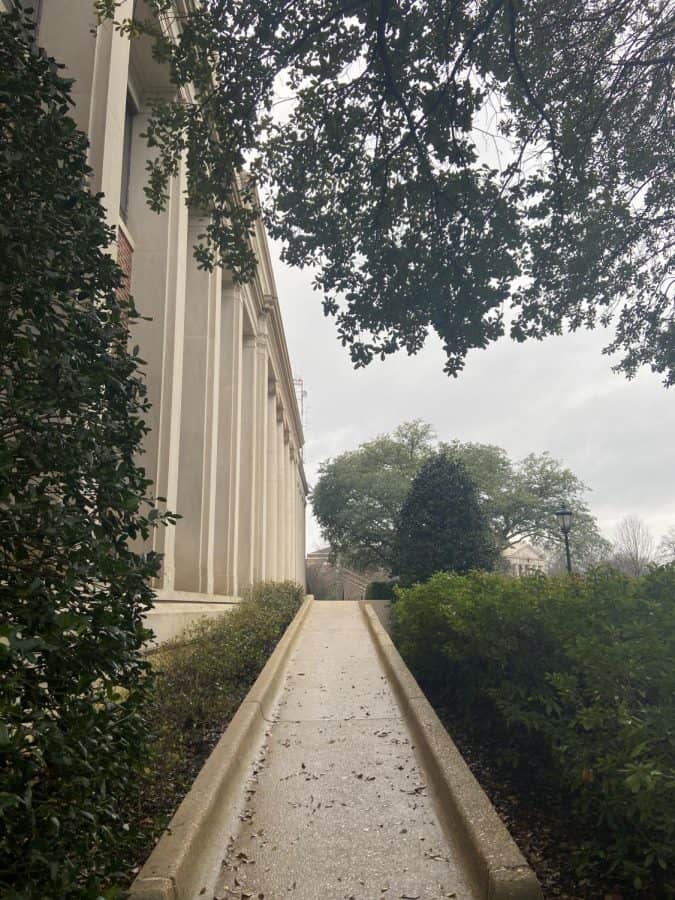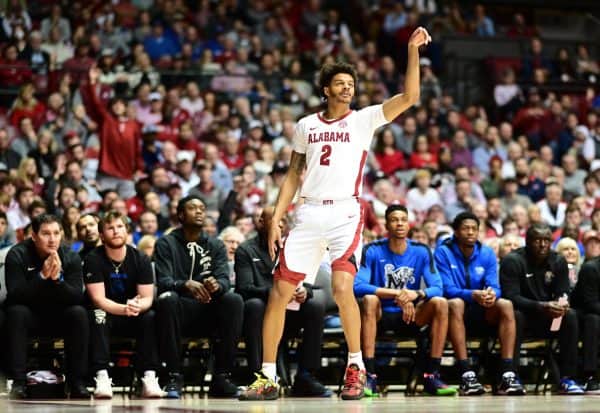Students with physical disabilities navigate campus accessibility
Above is a photo of a ramp outside of Rose Administration, but not all buildings are ADA-accessible. CW / Keely Brewer
March 9, 2020
On Jan. 17, Lauren Hinds got stuck in an elevator in Morgan Hall.
For some, this wouldn’t be a big deal. She stayed calm and called the appropriate services. After 30 minutes, Hinds was able to leave the elevator and make her way to class. Unfortunately, that involved climbing three flights of stairs, and for Hinds, who has postural orthostatic tachycardia syndrome (POTS), orthostatic hypotension and neurocardiogenic syncope, this was no small feat.
“Since then, I’ve been more anxious about taking the elevator, but it sucks because I can’t really do anything about it, because I have to take the elevator anyways,” Hinds said.
Hinds, a sophomore majoring in psychology, is currently on medical withdrawal from the University as she deals with a flare-up from her chronic illnesses. She has accommodations through the Office of Disability Services.
There are about 290 elevators on campus. Older buildings like Morgan Hall only have one elevator. When that one elevator is unusable, then the student has no way to attend class.
“When malfunctions occasionally occur, most are minor and quickly repaired,” Duane Lamb, the associate vice president for facilities and grounds, said in a written statement. “If it’s necessary for elevators to be removed from service for more long-term repairs or upgrades, these shutdowns are communicated with the building’s primary occupants. UA technicians perform preventative maintenance on UA’s elevators monthly and thorough tests annually. Following the annual tests, our elevators are inspected by a state-approved inspector from outside campus.”
According to the Alabama State Data Center, more than one in ten Alabamians between the ages of 16 and 64 have some kind of disability. For many disabled UA students, the first point of reference would be the Office of Disability Services (ODS). ODS provides priority registration, a test-taking center and advocates for its students when needed.
“We primarily see students who have some type of learning disability or executive dysfunction,” Vanessa Goepel, the director of the Office of Disability Services, said. “The incredible majority of our students have invisible disabilities.”
Because of the nature of ODS’ typical accommodations, accessibility for students with mobility impairments are not always covered, such as when an elevator breaks down or a student has trouble navigating the bus system and ensuring they are getting to class on time.
The UA bus system, the Crimson Ride, switched apps from Transloc Rider to Passio Go! in the fall of 2019. Both apps give up-to-date information about the buses’ location and when it would arrive. Many students had issues with Transloc Rider before the change, but the sudden change to Passio Go! left students frustrated, or in worst-case scenarios, stranded or late for class.
“UA changed the Crimson Ride tracking system to continue providing students with an automatic vehicle location platform,” James Knickrehm, associate director of University Transportation Services, said in a written statement. “Since the implementation of the new system, the technical team has updated the app’s interface and tweaked it to improve the accuracy of estimated arrival times. UA staff are regularly riding the buses and monitoring the app’s performance to ensure the information provided to the app’s users is as accurate an estimate as feasible.”
With unreliable forms of transportation, many disabled students struggle with attendance policies. ODS does not provide excused absences but may help a student work with their professor on a case-by-case basis.
“We will determine if there is a disability that might lend itself to create some unexpected absences,” Goepel said. “The nature of flare-ups is kind of what that accommodation is for and if that accommodation is appropriate. It depends on what the course is. There are much greater limits to what can be done about missed courses because at some point, students are not actually able to attend the class often enough to be successful in learning the material.”
Hinds was originally a Spanish minor and had taken several UA Spanish classes, before switching her minor to criminal justice.
“When I would tell all my Spanish professors I had chronic illnesses and I needed accommodation, none of them were ever super sympathetic towards me,” Hinds said. “One professor told me that I should think about dropping the class and not minoring in Spanish because of my chronic illnesses. If you arrived to class more than two minutes late, he would count you absent for the whole entire class. One of my accommodations is tardiness because I have to walk really slow [due to my disabilities]. That professor was not very happy about accommodating me.”
Alabama Adapted Athletics houses the men’s and women’s wheelchair basketball teams and the wheelchair tennis team. All three teams won national championships in 2019, yet in the past, wheelchair athletes have struggled with professors excusing sports-related absences.
There are also several buildings on campus, such as Lakeside Dining Hall and Gordon Palmer Hall, that are not ADA accessible.
Despite facing adversity in receiving accommodations and navigating campus accessibility, Hinds said it is important to make the campus aware of the obstacles she faces on a daily basis.
“As someone [who is] a part of the disabled community, I have a responsibility to spread awareness and advocate for people in my position,” Hinds said.
UA students with disabilities can go to ods.ua.edu to receive information on accommodations.











